Citrobacter amalonaticus Y19 for constitutive expression of carbon monoxide-dependent hydrogen-production machinery
- PMID: 28360938
- PMCID: PMC5371261
- DOI: 10.1186/s13068-017-0770-8
Citrobacter amalonaticus Y19 for constitutive expression of carbon monoxide-dependent hydrogen-production machinery
Abstract
Background: Citrobacter amalonaticus Y19 is a good biocatalyst for production of hydrogen (H2) from oxidation of carbon monoxide (CO) via the so-called water-gas-shift reaction (WGSR). It has a high H2-production activity (23.83 mmol H2 g-1 cell h-1) from CO, and can grow well to a high density on various sugars. However, its H2-production activity is expressed only when CO is present as an inducer and in the absence of glucose.
Results: In order to avoid dependency on CO and glucose, in the present study, the native CO-inducible promoters of WGSR operons (CO dehydrogenase, CODH, and CODH-dependent hydrogenase, CO-hyd) in Y19 were carefully analyzed and replaced with strong and constitutive promoters screened from Y19. One engineered strain (Y19-PR1), selected from three positive ones after screening ~10,000 colonies, showed a similar CO-dependent H2-production activity to that of wild-type Y19, without being affected by glucose and/or CO. Compared with wild-type Y19, transcription of the CODH operon in Y19-PR1 increased 1.5-fold, although that of the CO-hyd operon remained at a similar level. To enhance the activity of CO-Hyd in Y19-PR1, further modifications, including an increase in gene copy number and engineering of the 5' untranslated region, were attempted, but without success.
Conclusions: Convenient recombinant Y19-PR1 that expresses CO-dependent H2-production activity without being limited by CO and glucose was obtained.
Keywords: CO-Hyd; CODH; Citrobacter amalonaticus; Water–gas-shift reaction; gapA; narG.
Figures
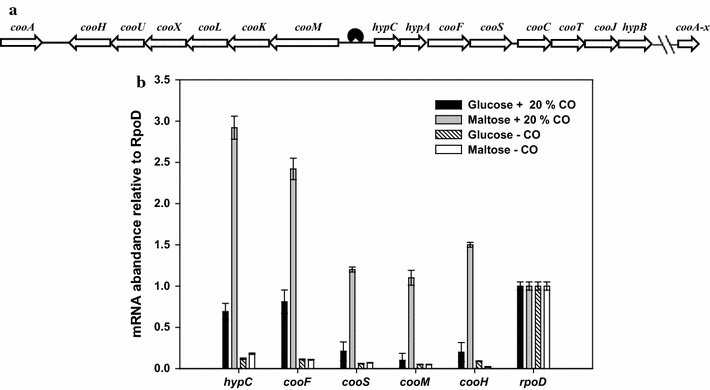
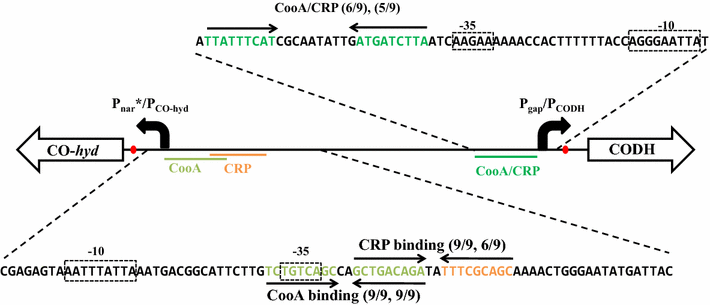
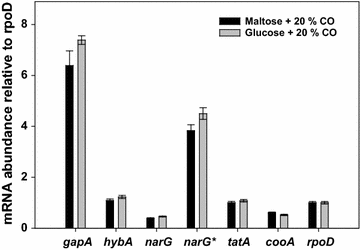
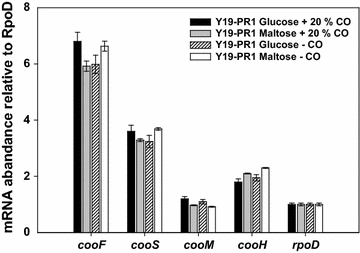
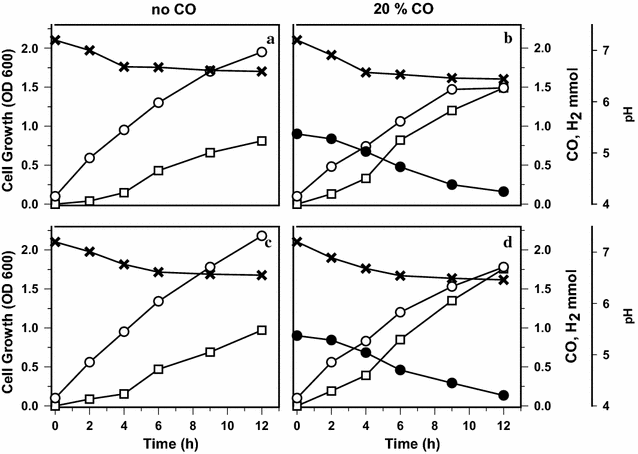
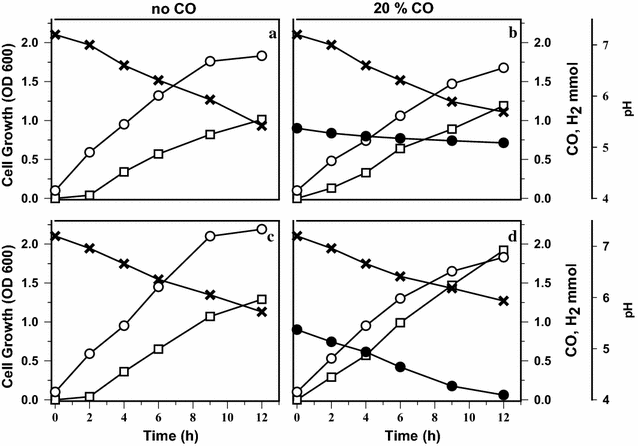
Similar articles
-
Co-culture-based biological carbon monoxide conversion by Citrobacter amalonaticus Y19 and Sporomusa ovata via a reducing-equivalent transfer mediator.Bioresour Technol. 2018 Jul;259:128-135. doi: 10.1016/j.biortech.2018.02.129. Epub 2018 Mar 2. Bioresour Technol. 2018. PMID: 29549832
-
Complete genome sequence of novel carbon monoxide oxidizing bacteria Citrobacter amalonaticus Y19, assembled de novo.J Biotechnol. 2015 Oct 10;211:79-80. doi: 10.1016/j.jbiotec.2015.07.012. Epub 2015 Jul 22. J Biotechnol. 2015. PMID: 26210290
-
Glycerol assimilation and production of 1,3-propanediol by Citrobacter amalonaticus Y19.Appl Microbiol Biotechnol. 2013 Jun;97(11):5001-11. doi: 10.1007/s00253-013-4726-z. Epub 2013 Feb 3. Appl Microbiol Biotechnol. 2013. PMID: 23377788
-
One-carbon substrate-based biohydrogen production: microbes, mechanism, and productivity.Biotechnol Adv. 2015 Jan-Feb;33(1):165-177. doi: 10.1016/j.biotechadv.2014.11.004. Epub 2014 Nov 21. Biotechnol Adv. 2015. PMID: 25461503 Review.
-
Mechanisms for hydrogen production by different bacteria during mixed-acid and photo-fermentation and perspectives of hydrogen production biotechnology.Crit Rev Biotechnol. 2015 Mar;35(1):103-13. doi: 10.3109/07388551.2013.809047. Epub 2013 Jul 29. Crit Rev Biotechnol. 2015. PMID: 23895041 Review.
Cited by
-
Effects of Nitrate on Hydrogenogenic Carbon Monoxide Oxidation in Parageobacillus thermoglucosidasius.Environ Microbiol Rep. 2025 Jun;17(3):e70133. doi: 10.1111/1758-2229.70133. Environ Microbiol Rep. 2025. PMID: 40515372 Free PMC article.
References
-
- Parthasarathy P, Narayanan KS. Hydrogen production from steam gasification of biomass: influence of process parameters on hydrogen yield–a review. Renew Energy. 2014;66:570–579. doi: 10.1016/j.renene.2013.12.025. - DOI
-
- Kim S, Seol E, Raj SM, Park S, Oh Y-K, Ryu DD. Various hydrogenases and formate-dependent hydrogen production in Citrobacter amalonaticus Y19. Int J Hydrog Energy. 2008;33:1509–1515. doi: 10.1016/j.ijhydene.2007.09.029. - DOI
LinkOut - more resources
Full Text Sources
Other Literature Sources

